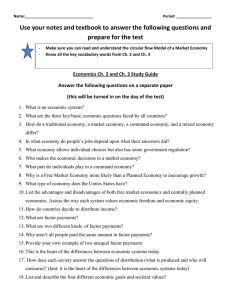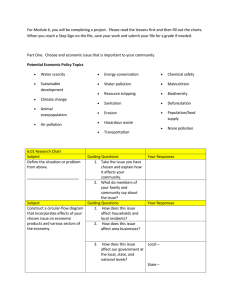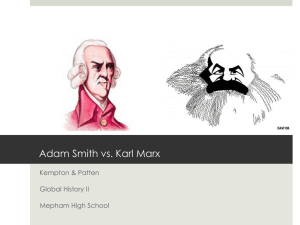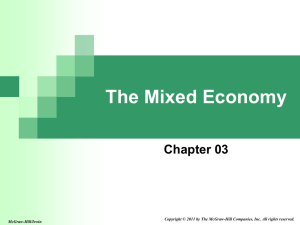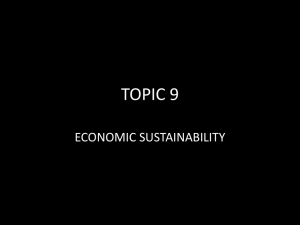Economic Systems Lesson Plan
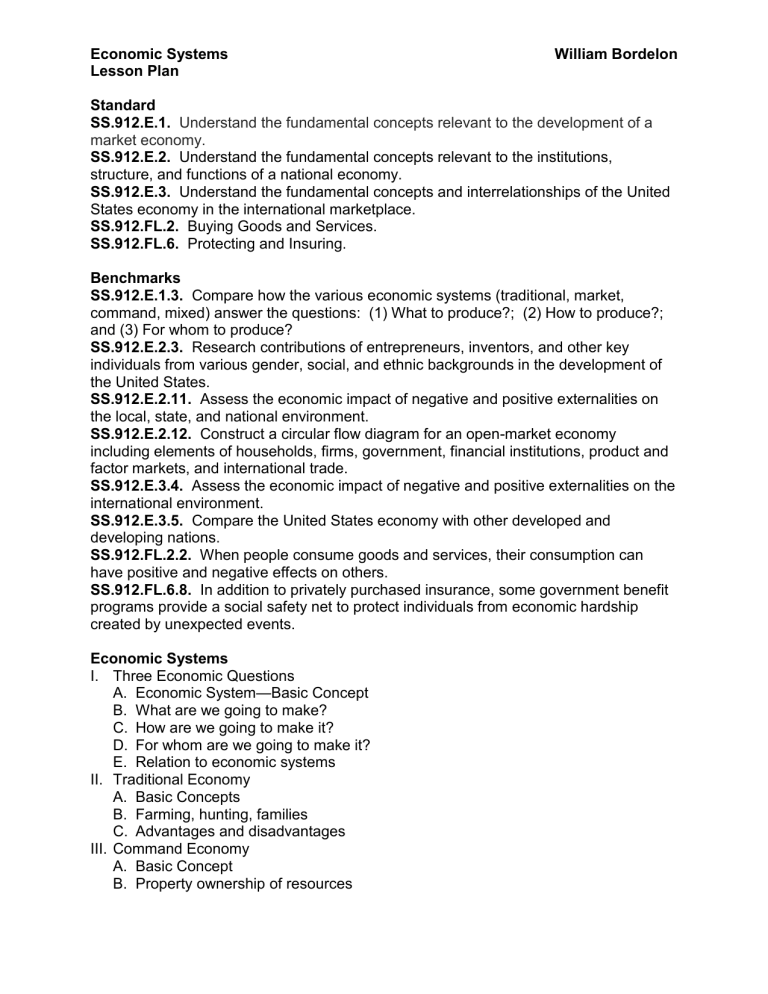
Economic Systems
Lesson Plan
William Bordelon
Standard
SS.912.E.1.
Understand the fundamental concepts relevant to the development of a market economy.
SS.912.E.2.
Understand the fundamental concepts relevant to the institutions, structure, and functions of a national economy.
SS.912.E.3.
Understand the fundamental concepts and interrelationships of the United
States economy in the international marketplace.
SS.912.FL.2. Buying Goods and Services.
SS.912.FL.6.
Protecting and Insuring.
Benchmarks
SS.912.E.1.3.
Compare how the various economic systems (traditional, market, command, mixed) answer the questions: (1) What to produce?; (2) How to produce?; and (3) For whom to produce?
SS.912.E.2.3.
Research contributions of entrepreneurs, inventors, and other key individuals from various gender, social, and ethnic backgrounds in the development of the United States.
SS.912.E.2.11.
Assess the economic impact of negative and positive externalities on the local, state, and national environment.
SS.912.E.2.12.
Construct a circular flow diagram for an open-market economy including elements of households, firms, government, financial institutions, product and factor markets, and international trade.
SS.912.E.3.4.
Assess the economic impact of negative and positive externalities on the international environment.
SS.912.E.3.5.
Compare the United States economy with other developed and developing nations.
SS.912.FL.2.2.
When people consume goods and services, their consumption can have positive and negative effects on others.
SS.912.FL.6.8.
In addition to privately purchased insurance, some government benefit programs provide a social safety net to protect individuals from economic hardship created by unexpected events.
Economic Systems
I. Three Economic Questions
A. Economic System —Basic Concept
B. What are we going to make?
C. How are we going to make it?
D. For whom are we going to make it?
E. Relation to economic systems
II. Traditional Economy
A. Basic Concepts
B. Farming, hunting, families
C. Advantages and disadvantages
III. Command Economy
A. Basic Concept
B. Property ownership of resources
Economic Systems
Lesson Plan
C. Central planning
D. Communism vs. socialism
E. Advantages and disadvantages
F. Karl Marx
IV. Market Economy
William Bordelon
A. Property ownership of resources
B. Specialization
C. Rational self-interest and competition
D. Circular Flow Diagram of Market Economy
E. Advantages and disadvantages
F. Adam Smith and the Invisible Hand
V. Mixed Economy
A. Basic Concept
B. U.S. model: market economy with limited government intervention
C. Market Failure
D. Externalities and Public Goods
E. Circular Flow Diagram of a Mixed Economy
F. Comparison and contrast of the United States with other economies
Content: three economic questions, economic systems, traditional economy, command economy, Karl Marx, market economy, circular flow diagram, Adam Smith, mixed economy, externalities, public goods
Key Terms: economic systems, traditional economy, command economy, centrallyplanned economy, communism, socialism, Karl Marx, market economy, specialization, competition, rational selfinterest, “invisible hand of the marketplace,” laissez-faire ,
Adam Smith, circular flow diagram, mixed economy, market failure, externalities, public goods
Formatives and Summatives
Review Questions 2.1, 2.2, 2.3, 2.4
Economic Decision Making Test



